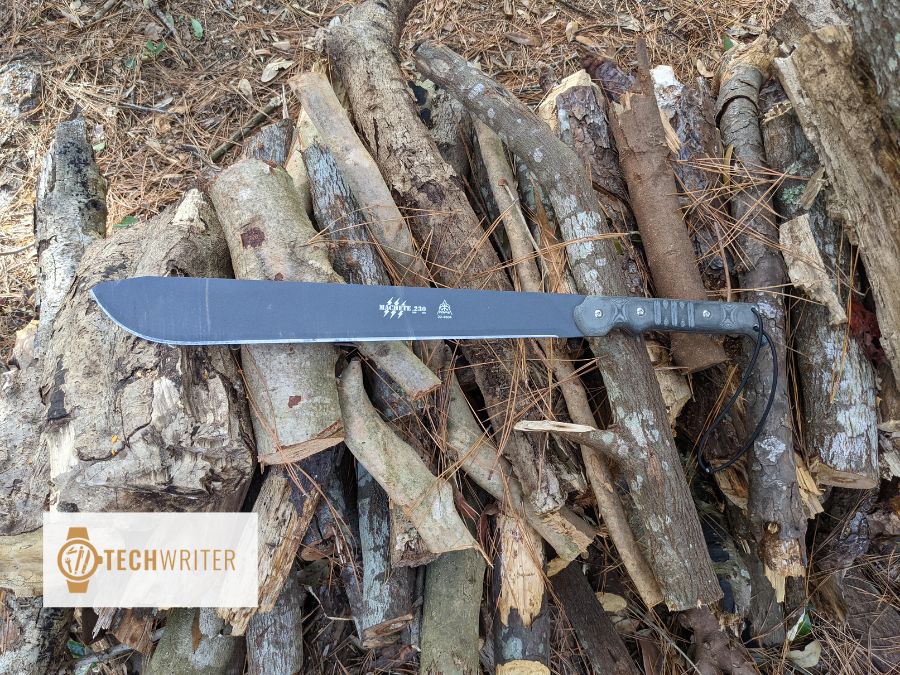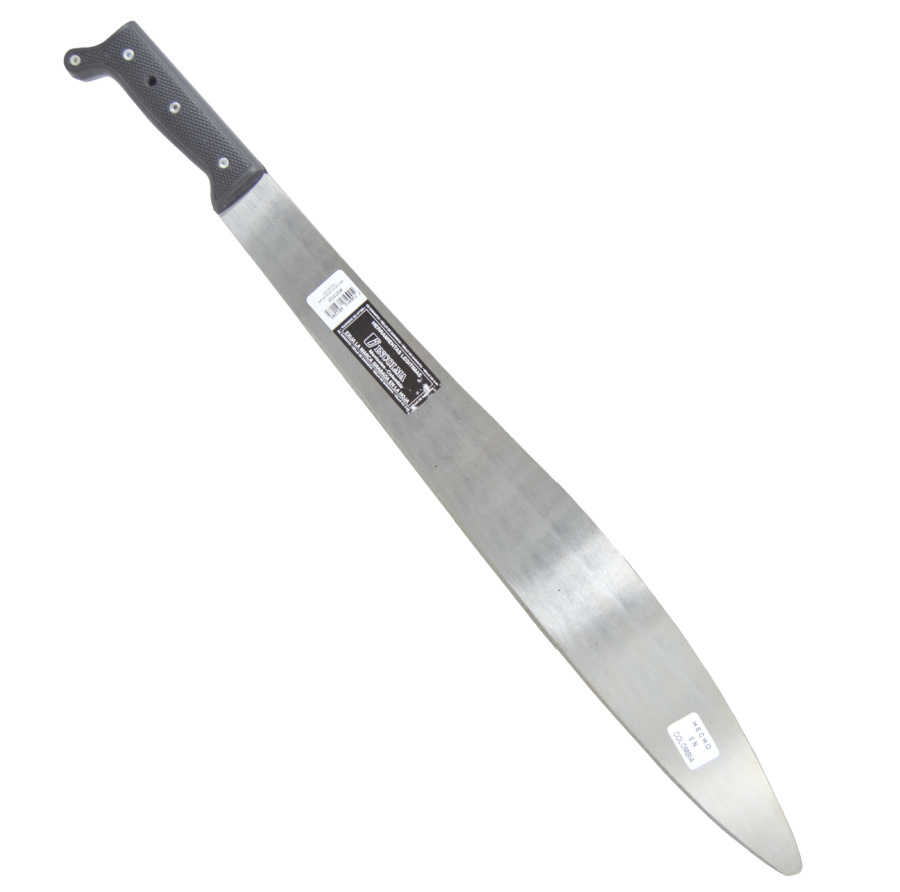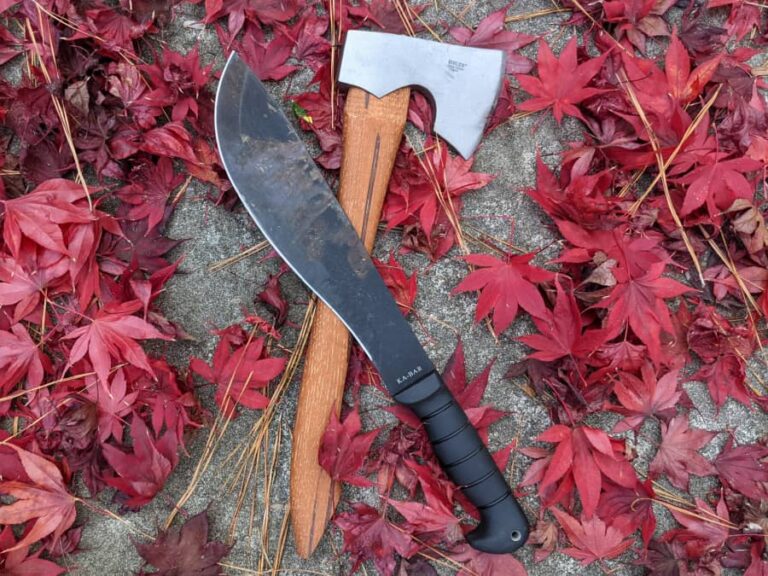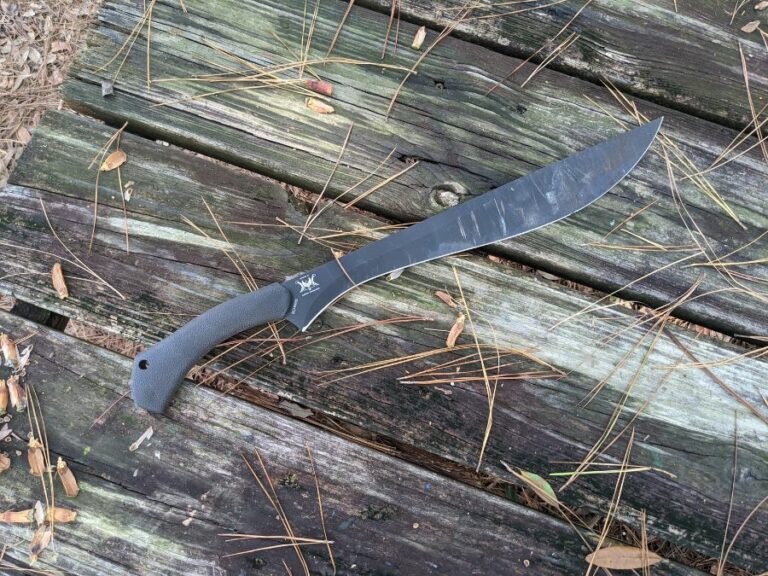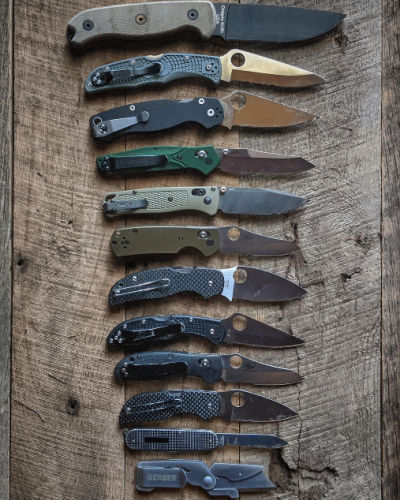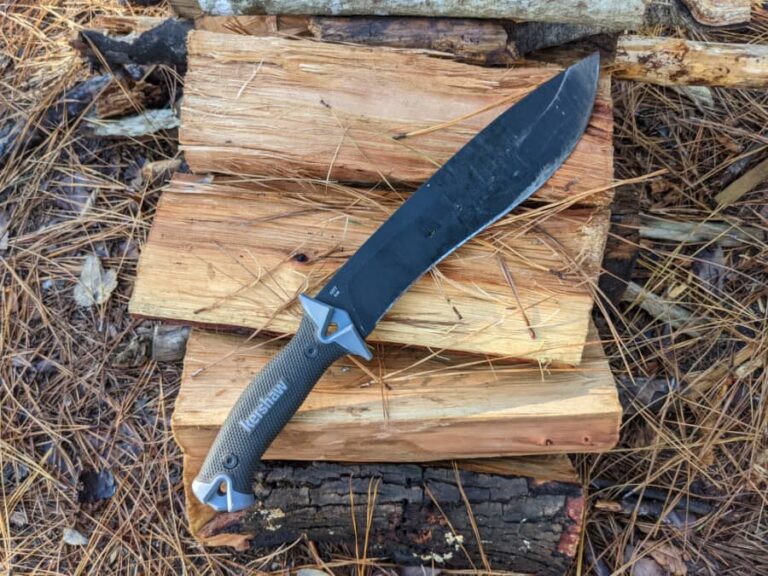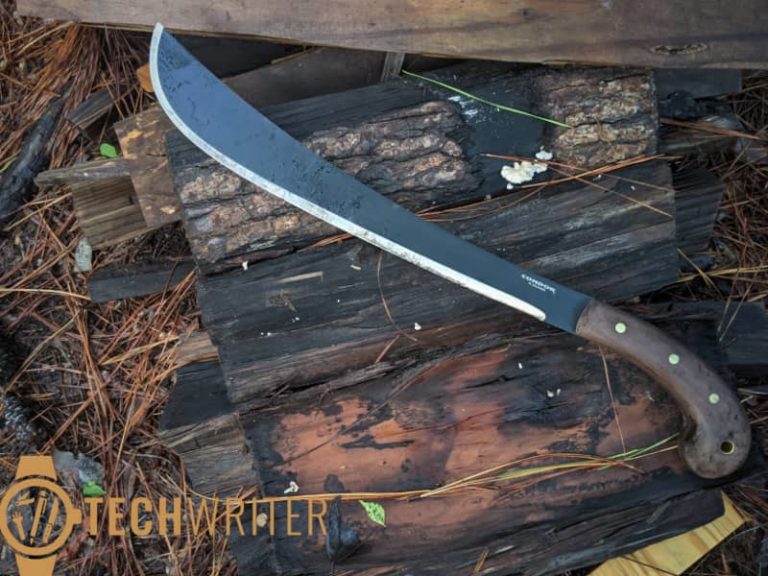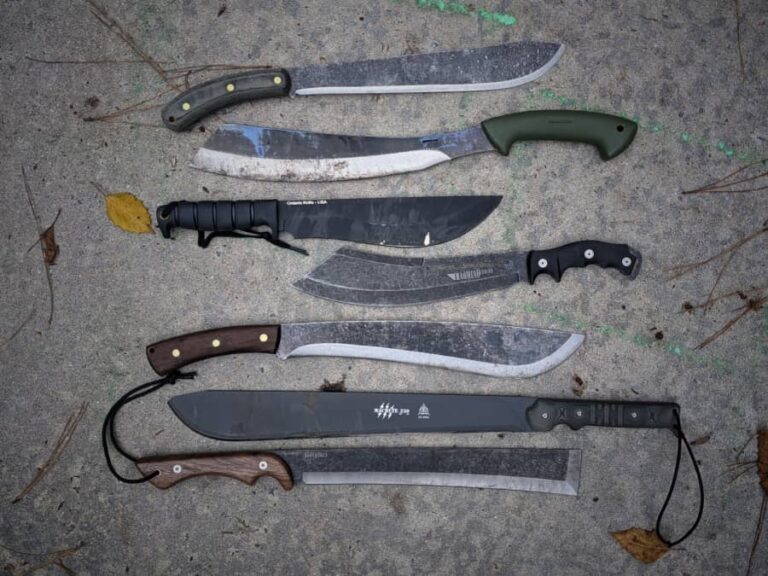What Is A Machete?
Machetes are a powerful all-in-one cutting tool that has been used for thousands of years, as far as history can show.
However, they may be even older and have been used by just about every culture worldwide. This ubiquity of use, combined with their benefits today, makes them one of the most popular tools in the world.
Let’s take a deep look at the history of this tool to give it a broader context.
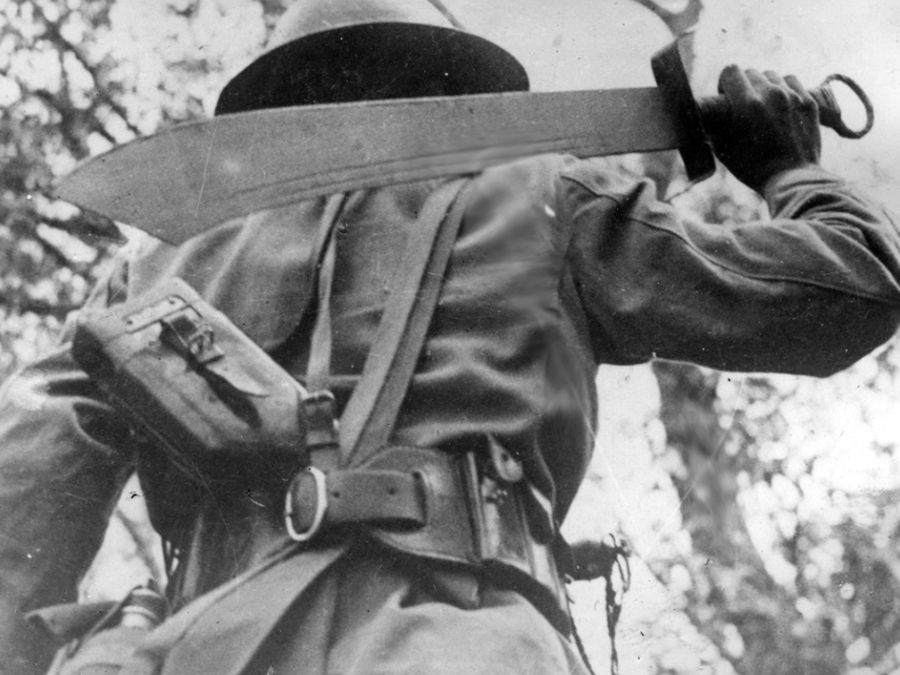
Image from: Ww2db.com
Where Did Machetes Originate?
Machetes exist in some form in most countries and cultures globally. That’s likely because their design is so simple and utilitarian. A basic machete is a broad blade that is typically about 12-18 inches (30-45 centimeters) long and about one-eight (three millimeters) thick. Their blade shape may vary based on where they’re used, as may their name.
The earliest known machete may have come from Ancient Greece or China, with the Greeks using a kopi, a very similar tool, and the Chinese using the dao. However, European armies, throughout multiple centuries, have also used swords that resemble machetes. The modern manufacture of machetes likely originated in 1826 in Collinsville, Connecticut.

Source: Connecticuthistory.org
Here, the Collins Company was founded and began producing machetes in 1845. For many years, they were the primary provider of high-quality machetes and were called “un Collins” by many users. Their popularity skyrocketed throughout the world as their obvious benefits became apparent. Buyers realized very quickly that the machete could be used for just about anything!
The name machete likely came from the Spanish word “macho“, which has also been used to refer to sledgehammers. However, ancient Romans also used a form of machete and called it the “machaera”. In other places, like Jamaica and other Caribbean areas, the machete is called the “cutlass”. Anyone who knows pirate history has heard this term more than once.
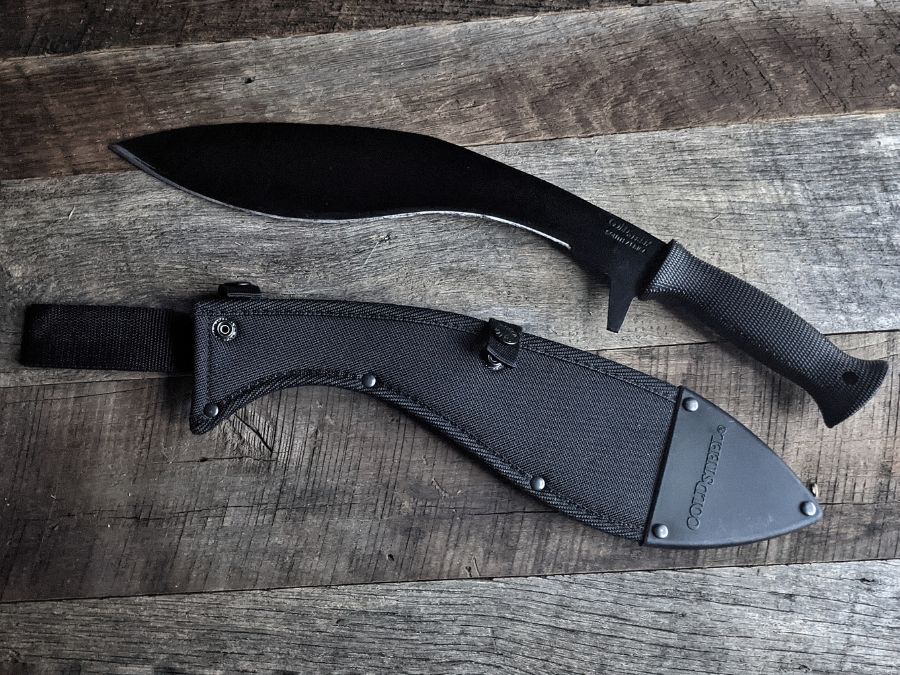
How the Machete is Used
The best things about the machete is its simplicity, ease of use, size, and sharpness. While quite large, they’re also small and light enough to use with one hand. Furthermore, they’re sharp enough to cut through just about anything. That makes them a powerful tool for multiple uses.
Let’s take a look at a few of the most popular uses, including some historical moments when they were used in these ways.
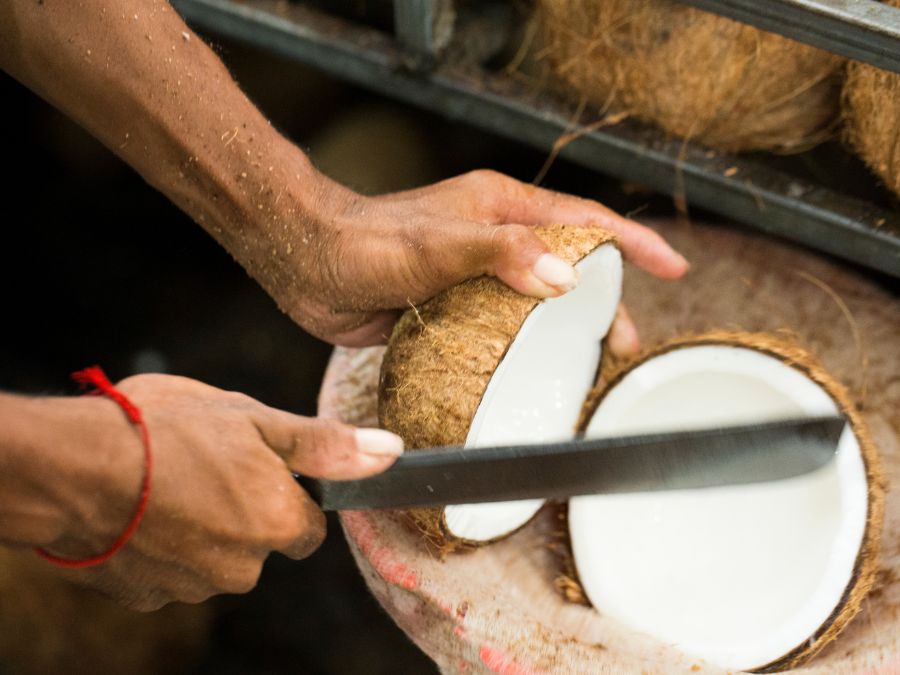
Agricultural Uses: How Machetes Save Harvesters Time
Machetes are still used in multiple tropical and subtropical regions as a harvesting tools for various crops. For example, they can be used to harvest sugarcane and are also helpful for cutting through thick rainforest regions. Others have used machetes to clear yards, eliminate small plants, open coconuts, chop animal food, and much more.
They can also cut and strip small trees and are used in many subsistence-based agricultural areas. In this way, they provide a valuable option for people who can’t afford large harvesters or other expensive mechanical equipment. In these regions, children are taught how to use machetes at a very young age, though their parents typically handle them for harvesting.
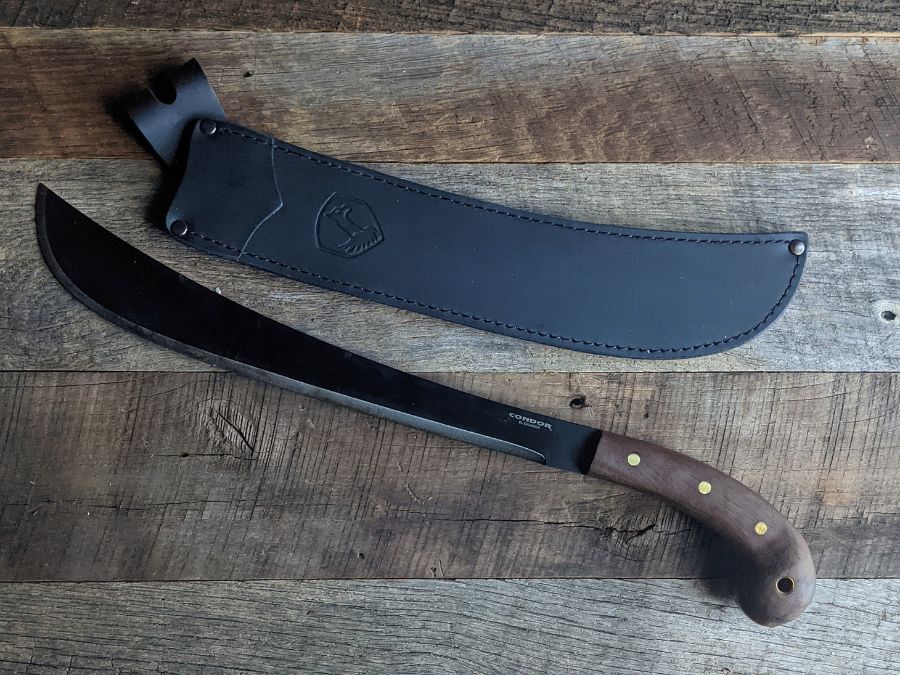
Exploration: A Vital Tool
Have you ever watched an old movie where jungle explorers chop away at fines and trees with a machete to clear a path? That’s not just an invention of Hollywood: machetes provide explorers with a quick and easy-to-use tool that makes it simpler to clear paths. However, they were also a powerful weapon when explorers came across aggressive animals or others on their journey.
Even now, explorers often carry machetes with them when going through these thick and treacherous areas. Modern machetes may have upgrades like ergonomic handles and more finely sharpened blades that can resist wear and tear more easily. However, the basic design of the machete has remained essentially the same for generations, which makes it a fascinating tool.
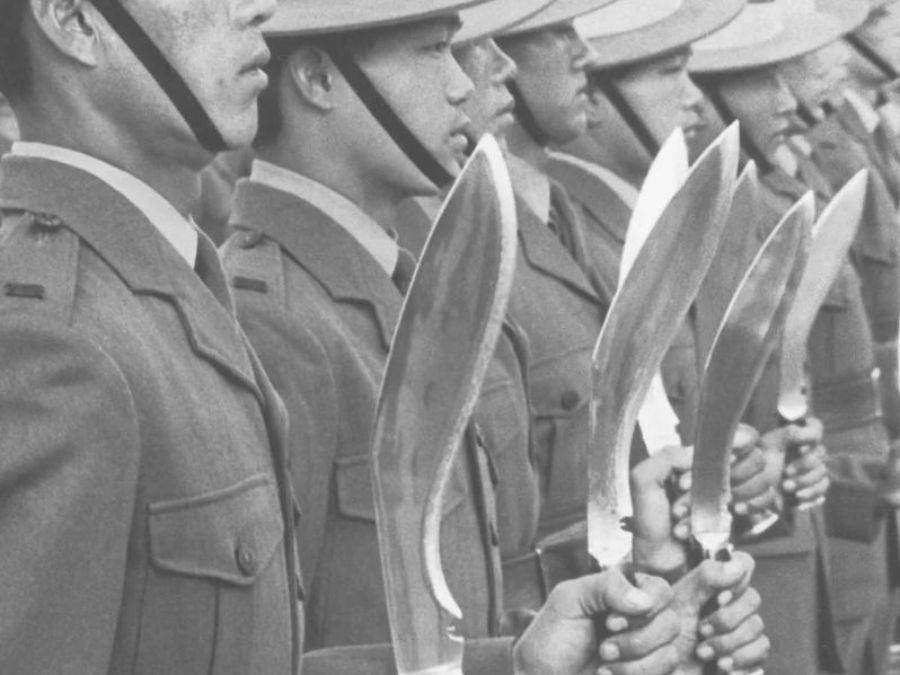
Warfare: A Common Tool in Many Uprisings
Though machetes aren’t necessarily an official war weapon, they have been used in warfare in the past. For example, the Boricua Popular Army were called “macheteros” because they were formed from sugar cane field workers who yielded machetes as their primary weapon. Some even had machetes on their belt that they used as a secondary weapon for hand-to-hand combat.
In the Seven Years’ War in Havana, natives were given machetes to defend themselves against the invading British. Cuban fighters also used the machete during their independence wars. Most slave uprisings throughout the Caribbean focused on the machete. Most slaves had experience with the machete and access to these tools. The results were often quite bloody.
The Brazilian Army issues many of its soldiers with an all-purpose machete for both wartime and general use. These come with a sharpening stone and a Bowie knife for general use. Other regions that used machetes in uprisings include Rwanda during its 1994 genocide, throughout West and South Africa, and in other regions affected by imperialism.
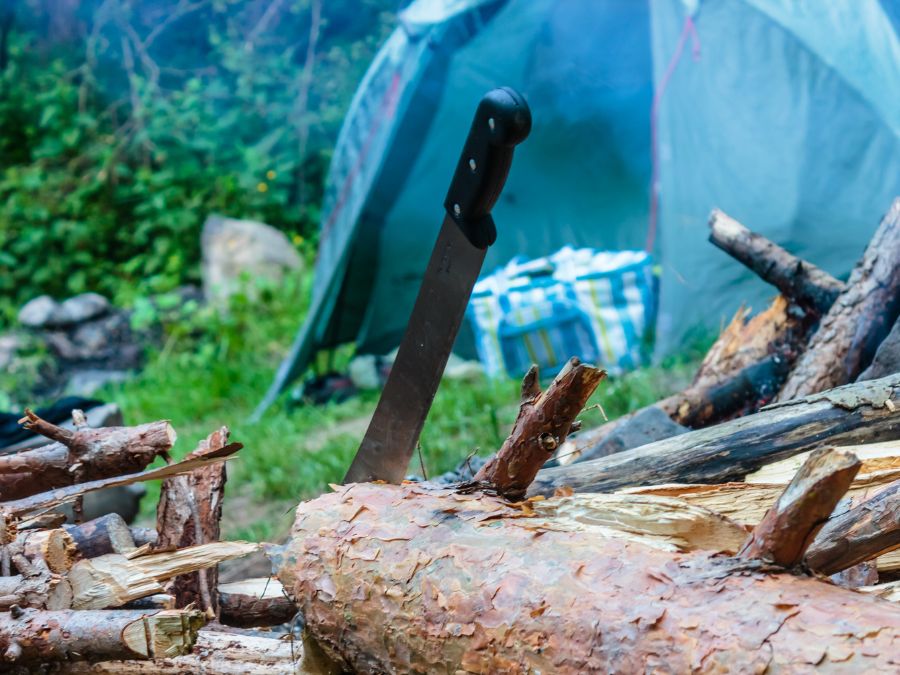
Camping: Still a Useful Option
Campers often pack a machete on their trips because it’s so useful for many situations. For example, it can cut kindling for a fire, chop down larger trees for the fire, gut and fillet a fish, skin, and butcher game, and much more. These multiple uses make a sharp machete a great tool for general camping or for more survival-based scenarios.
The young adult book, “Hatchet,” features a young boy who survives in the woods for a long time after a plane crash strands him alone with nothing but a small ax. While an ax is not a machete, survivalists claim that a sharp machete could do many of the same functions as an ax. As a result, it is often one of the most common tools used by survivalists and trainers focused on survival.
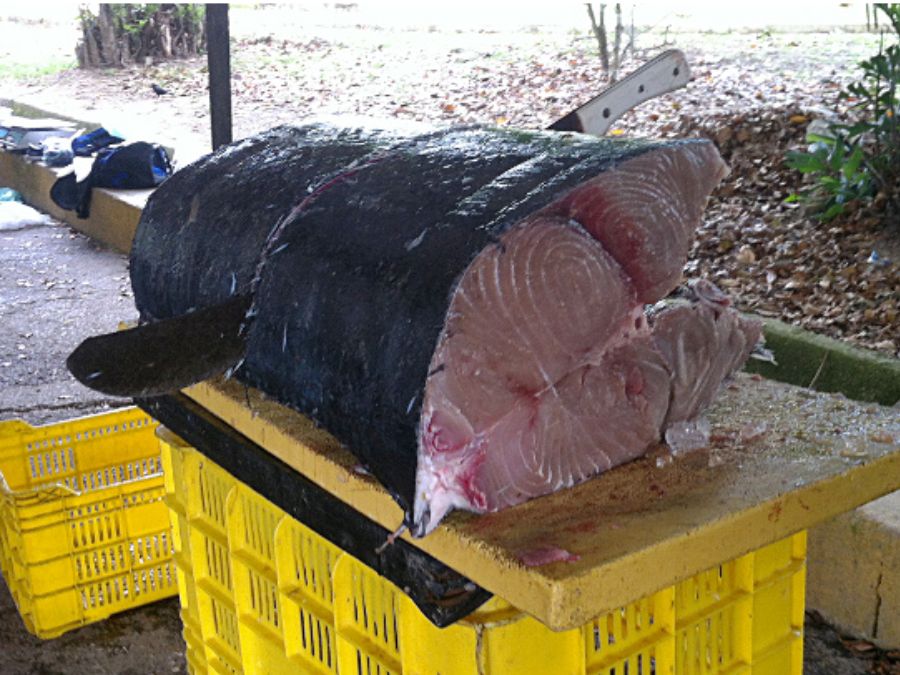
Other Unique Machete Uses
You may also use your machete in many other unique ways, including:
- Creating compost for your yard or home
- Removing dead plants and debris from your yard
- Butchering dead animals and preparing them for cooking
- Carving wood to make tools like fishing lines
- Digging out roots in your yard
- Foraging when camping
- Making traps, snares, shelters, and other survival areas
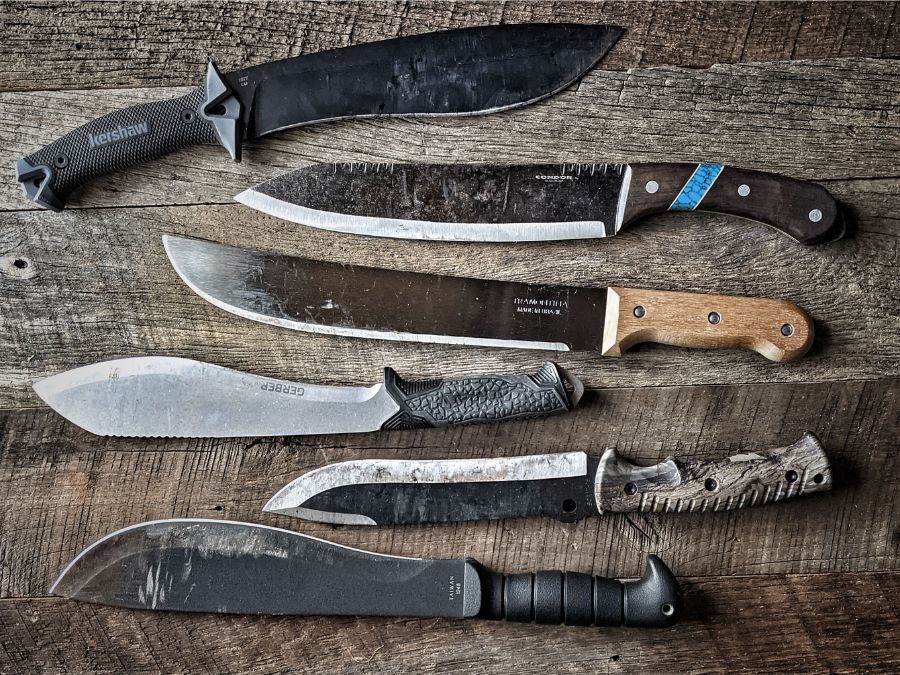
A Machete By Any Other Name
- Cultures around the world use many different names for machetes, including:
- Parang
- Golok
- Tsakat
- Tapanga
- Kopis
- Kukri
- Sorocaban knife
- Dusack
- Seax
Machete Types: How They Differ Around the World
No history of machetes would be complete without looking at a few different types commonly used around the world. These are some of the most popular types still used today and how they differ from each other. This information should help you identify unique machete types when shopping for one.
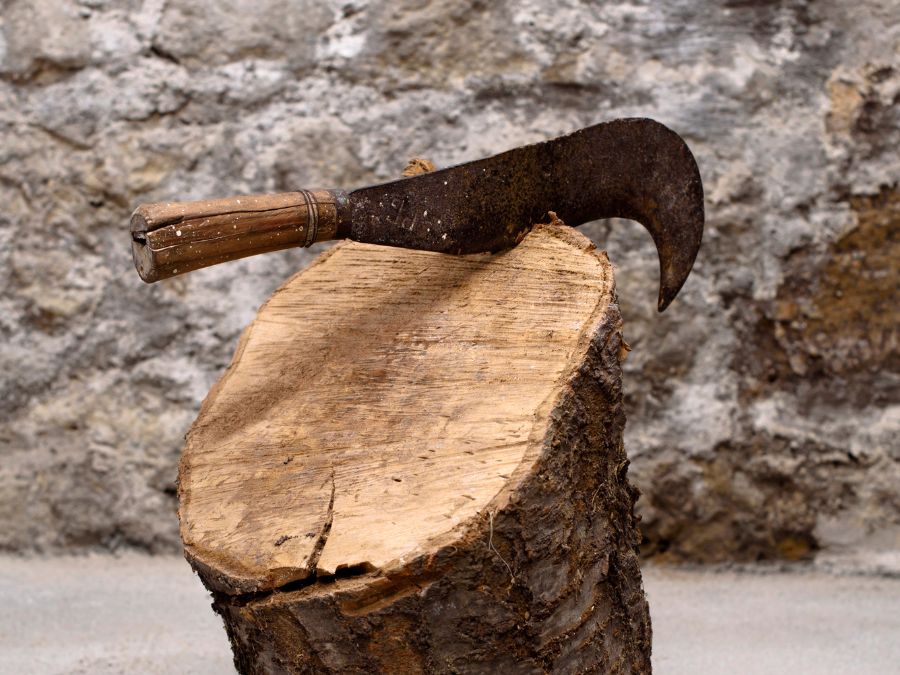
Billhook Machete
Also known as a reaping or bagging hook, it has a nine-inch blade with a beveled cutting edge. It is one of the most popular machete types and is used in many regions. When you think of a machete, it is very likely a billhook that comes to mind due to its prevalence.
Colima Machete
The Colima machete is about 3-4 feet long and is sharp on both sides. It is an excellent option for cutting down vegetation because you can swipe through large areas with ease. It looks a bit like a short sword and may have been adapted from the roman Gladius due to their similarities.
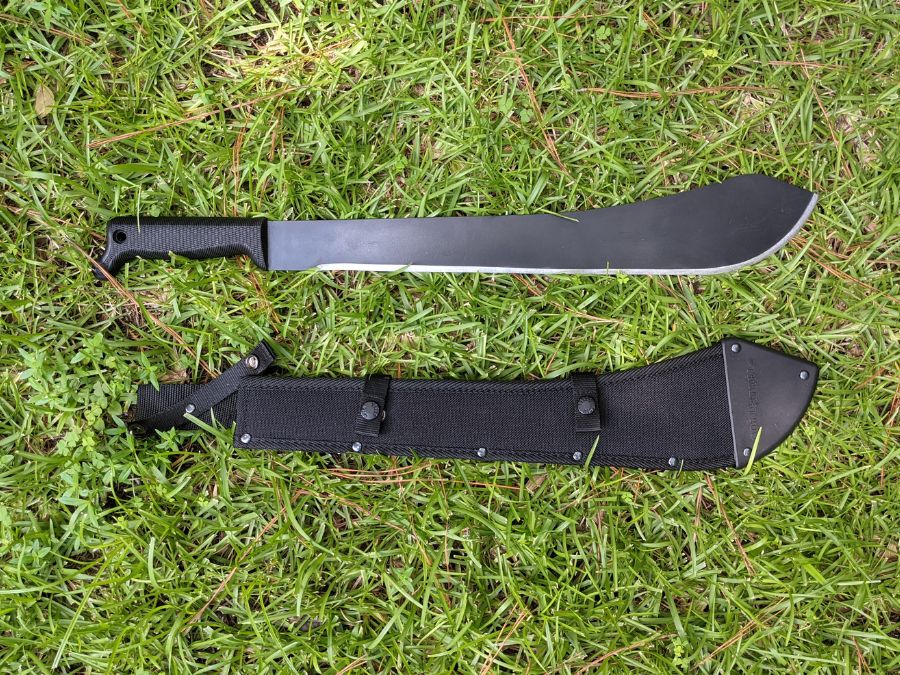
Bolo Machete
Used commonly throughout many parts of Asia, it is a valuable farming tool used to harvest rice, soybeans, and other Asian crops. They bulge toward the end to have more power and weight to the fore blade. This gives them a somewhat unusual look compared to others.
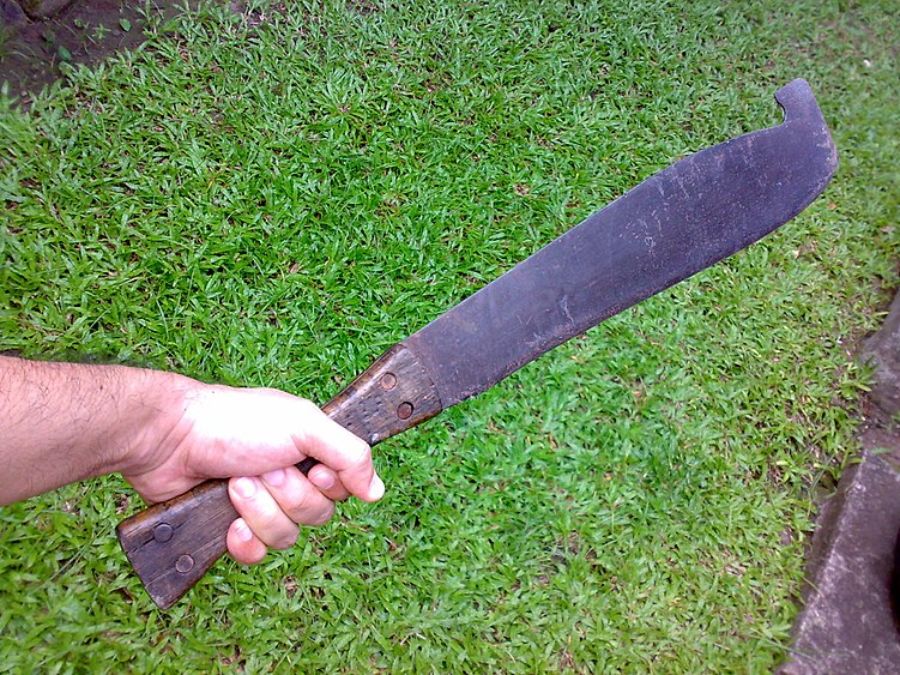
Cane Machete
The cane machete is used for harvesting sugar cane and has a hook at the top that helps cut cane and separate them for chopping. It has a flat and blunt end that tapers down to the hilt, which makes it suitable for cutting large numbers of sugar cane quickly and effectively.
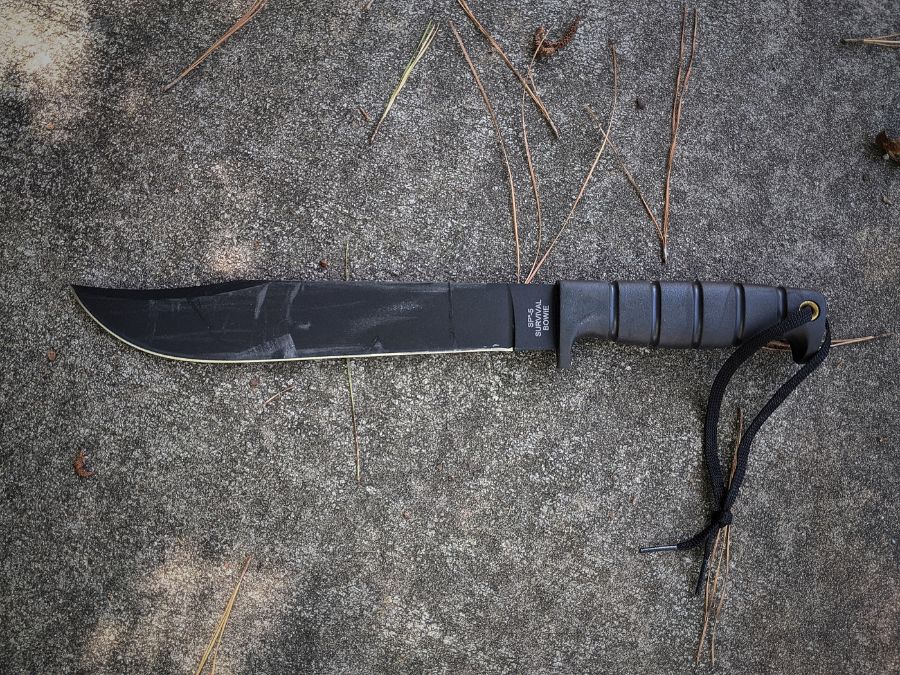
Bowie Machete
Jim Bowie, the inventor of the Bowie knife, made this machete famous. It looks similar to a Bowie knife but on a larger scale. That makes it a useful general machete option and one that is often favored by campers and hunters, as well as survival specialists.
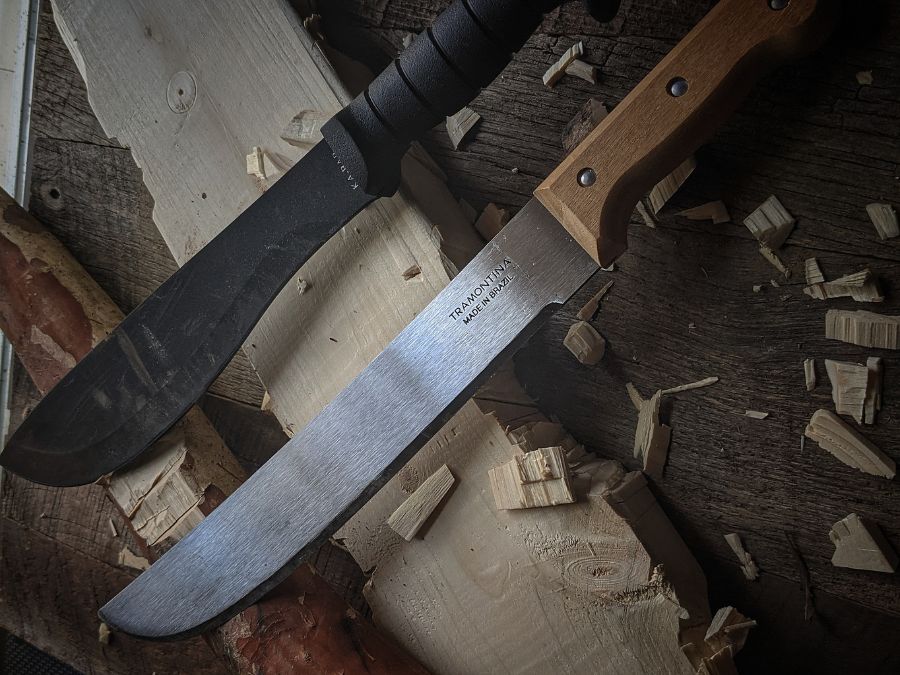
Ready For Your Next Machete?
With all of the options on the market, it can be hard to decide which one is right for you. Do some research and find the perfect fit for your needs. We have talked a lot about machetes for clearing brush and reviewed many individual ones.
Whether you’re looking for a survival machete or something more specialized for around the house, we hope this guide has helped make your decision easier.

Blair Witkowski is an avid watch nut, loves pocket knives and flashlights, and when he is not trying to be a good dad to his nine kids, you will find him running or posting pics on Instagram. Besides writing articles for Tech Writer EDC he is also the founder of Lowcountry Style & Living. In addition to writing, he is focused on improving his client’s websites for his other passion, Search Engine Optimization. His wife Jennifer and he live in coastal South Carolina.

